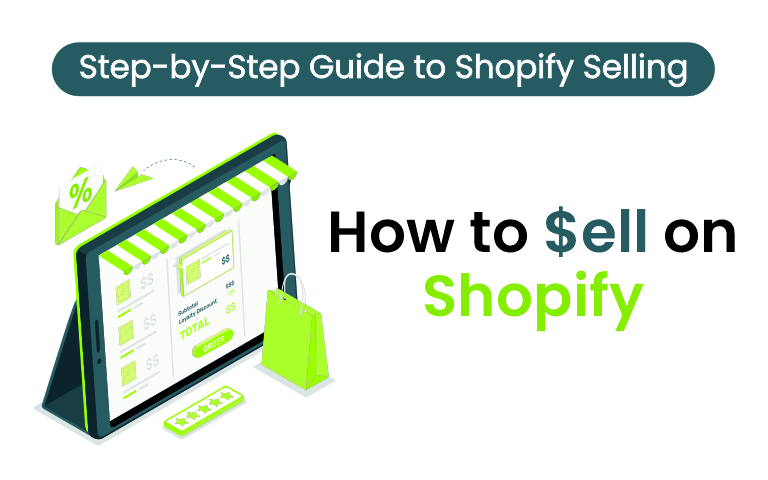Introduction
As the eCommerce landscape continues to evolve, Shopify remains at the forefront, providing a robust platform for businesses to launch and scale their online stores. Selling on Shopify in 2024 is more lucrative than ever, thanks to new tools, integrations, and strategies that make it easier to reach and convert customers. This guide will take you through the essential steps to effectively sell on Shopify and succeed in this competitive market.
Why Choose Shopify in 2024?
Shopify has long been a preferred eCommerce platform for entrepreneurs and established businesses due to its user-friendly interface and extensive capabilities. In 2024, Shopify has introduced new features that make it even more attractive:
– **Enhanced Customization**: With new themes and design tools, you can create a store that’s not only visually appealing but also optimized for conversions.
– **Advanced Integrations**: Shopify now offers better integration with third-party apps and social platforms, streamlining the process of marketing and sales.
– **Scalability**: Whether you’re just starting out or scaling a business to thousands of orders, Shopify can handle your growth with ease.
Setting Up Your Shopify Store
To sell on Shopify, setting up your store is the first critical step:
– **Choosing Your Plan**: Shopify offers a range of pricing plans to fit different business needs. From the Basic plan for startups to the Advanced plan for larger operations, evaluate your current needs and future growth to select the best option.
– **Store Design and Customization**: Choose from Shopify’s extensive theme library or opt for custom design solutions to create a store that aligns with your brand. Customize the layout, colors, and fonts to make it unique.
– **Essential Apps for 2024**: Enhance your store’s functionality with must-have apps like Oberlo for dropshipping, Klaviyo for email marketing, and PageFly for landing page customization.
Adding Products and Optimizing Listings
A well-optimized product listing can be the difference between a casual browser and a loyal customer:
– **Product Details**: Write engaging and informative product titles and descriptions. Use high-quality images that show different angles and uses of your product.
– **SEO Best Practices**: To increase visibility, include relevant keywords in your product descriptions, meta descriptions, and alt text for images.
– **Pricing Strategies**: Research competitors and set a competitive price point that still allows for a healthy profit margin. Consider implementing discounts and bundle deals to attract more customers.
Implementing Effective Marketing Strategies
Marketing your Shopify store effectively can drive consistent traffic and sales:
– **Social Media Integration**: Connect your store with Instagram, TikTok, and Facebook to reach a broader audience. Use shoppable posts and ads to direct users straight to your product pages.
– **Email Marketing**: Build and maintain an email list with platforms like Klaviyo. Send targeted emails with product launches, exclusive offers, and updates to keep customers engaged.
– **Influencer Collaborations**: Partner with influencers who align with your brand to tap into their audience and build trust.
– **Shopify’s Built-In Tools**: Use Shopify Email for streamlined campaigns and Shopify Audiences to create targeted ad campaigns that are more likely to convert.
Payment, Shipping, and Fulfillment
Streamline the purchasing and delivery process for a seamless customer experience:
– **Payment Gateways**: Shopify offers a variety of payment options, including Shopify Payments, PayPal, and other third-party providers. Ensure you offer popular options in your target markets.
– **Shipping Strategies**: Optimize your shipping settings to offer customers a range of choices, from standard to expedited shipping. Make use of Shopify Shipping for discounted rates and easy label printing.
– **Fulfillment Options**: Explore the Shopify Fulfillment Network for fast, reliable fulfillment or integrate with third-party logistics providers for expanded options.
Enhancing Customer Experience
A positive customer experience can lead to higher retention and more sales:
– **Responsive Design**: Ensure your store is mobile-friendly, as more users shop via mobile devices. A responsive design improves the user experience across all devices.
– **Customer Support**: Integrate chatbots and live chat features to provide real-time support and increase customer satisfaction.
– **Personalized Shopping**: Use data to recommend products based on past purchases or browsing behavior. Loyalty programs can also incentivize repeat purchases and build a community around your brand.
Analytics and Continuous Improvement
Staying ahead requires ongoing assessment and optimization:
– **Shopify Analytics**: Use Shopify’s built-in analytics tools to track key metrics like conversion rates, average order value, and traffic sources. These insights help you make informed decisions.
– **A/B Testing**: Test different versions of your product pages, marketing emails, and checkout process to find what works best.
– **Adjusting to Market Trends**: Stay flexible by keeping up with industry trends and customer feedback. This adaptability will help you stay competitive and relevant in 2024.
Conclusion
Selling on Shopify in 2024 offers immense opportunities for growth, but it requires a well-rounded strategy that covers everything from store setup to continuous optimization. By leveraging Shopify’s extensive tools, integrating effective marketing techniques, and focusing on customer experience, you can build a successful eCommerce business that thrives in this ever-changing market.
Ready to take your Shopify store to the next level? Whether you’re just starting out or looking to enhance your existing store, following these strategies will set you up for success in 2024.

